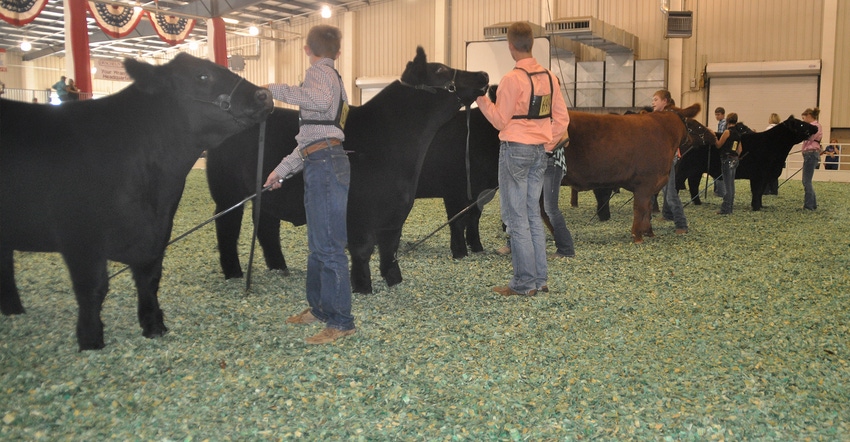
When we hit the road with a trailer full of livestock, it’s enough work to load them, haul them without stress and unload in the right place. Add in the detail of having to provide health papers for each animal, and the trip across state lines becomes even more expensive and challenging.
Why does the process of getting health papers exist? I often wonder why I can’t just load our sale bulls, show heifers or pigs and get on down the road. Why must I, or any farmer or rancher, worry about having a veterinarian inspect our animals and then sign health papers for interstate transport?
The reason is disease. We take care of our animals at home, but we never know what might be in their systems. A respiratory disease or viral infection can happen in a barn, pen or any region of the country. In order to prevent the potential spread of animal diseases across state lines, state departments of agriculture and other agencies created rules and regulations to govern the transportation of livestock, companion animals, equines and other animals. While every state does have strict requirements for the movement of livestock, not all states have rules for the importation of companion animals.
Certificates of Veterinary Inspection are formally called Official Health Certificates and are required for the importation of livestock and equine in each state. Cattlemen, hog farmers, and sheep and goat breeders must also secure health papers for exportation of livestock to other countries and should check the U.S. Department of Agriculture’s Animal and Plant Health Inspection Service (APHIS) regulations when sending livestock overseas. Local veterinarians are the No. 1 source of information on what each species and animal needs when it’s driven across state lines. Most sales or livestock shows will help breeders by providing the sale’s or show’s physical address and individual state health needs. A veterinarian then may need to examine the animals in advance of transport date and verify basic vaccinations, such as brucellosis at weaning age in cattle, have been administered.
In 2013, USDA published a final rule establishing general regulations for improving the traceability of U.S. livestock moving interstate. Under the final rule, unless specifically exempted, livestock moved interstate would have to be officially identified and accompanied by an interstate certificate of veterinary inspection or other documentation, such as owner-shipper statements or brand certificates.
The final rule has some changes from its previous listing, set in August 2011. The latest updates include:
• accepting the use of brands, tattoos and brand registration as official identification when accepted by the shipping and receiving states or tribes
• permanently maintaining the use of back tags as an alternative to official ear tags for cattle and bison moved directly to slaughter
• accepting movement documentation other than an Interstate Certificate of Veterinary Inspection (ICVI) for all ages and classes of cattle when accepted by the shipping and receiving states or tribes
• clarifying that all livestock moved interstate to a custom slaughter facility are exempt from the regulations
• exempting chicks moved interstate from a hatchery from the official identification requirements
Beef cattle under 18 months of age, unless they are moved interstate for shows, exhibitions, rodeos or recreational events, are exempt from the official identification requirement in this rule. These specific traceability requirements for this group are addressed in separate rulemaking, allowing APHIS to work closely with industry to ensure the effective implementation of the identification requirements.
The American Veterinary Medical Association says animal disease traceability, or knowing where diseased and at-risk animals are, where they've been, and when, is very important to ensure a rapid response when animal disease events take place. An efficient and accurate animal disease traceability system helps reduce the number of animals involved in an investigation, reduces the time needed to respond, and decreases the cost to producers and the government.
We are traveling to the National Junior Angus Show in Des Moines, Iowa, this summer, and even though we only have two show heifers that were born and raised at home and have no health issues or diseases, we must follow Iowa State Department of Ag rules and provide health certificates that prove our animals have been vaccinated, identified and inspected properly. A health certificate is an expense, but we must adhere to the rules in order for our heifers to be allowed at the show.
Making sure we follow rules is important not only to our credibility, but also to anyone who consumes or monitors the food supply. We don’t want disease to spread or give consumers a reason to be suspicious of our intent when we transport. It’s a good practice for all ranchers to stick to the rules so we continue to put safe meat on consumers’ dinner tables.
I wonder if health papers should be required for humans as well. Think of the diseases we’d conquer if only we could better monitor the health of people. That might be a topic for a future magazine article.
McCurry writes from Colwich.
About the Author(s)
You May Also Like




